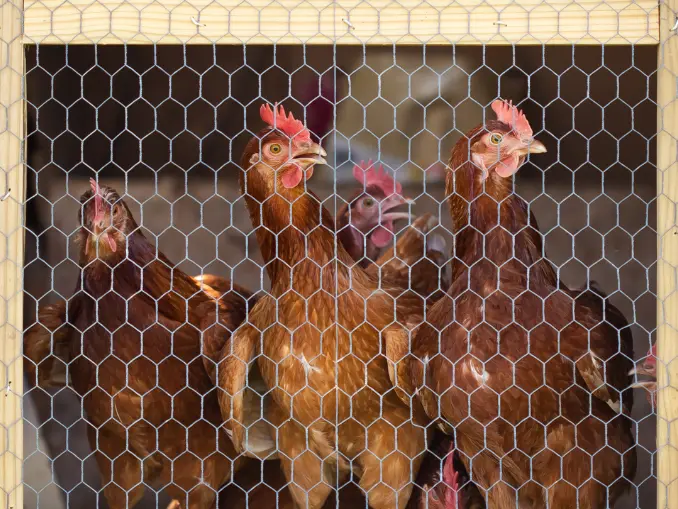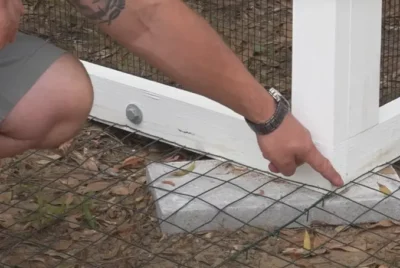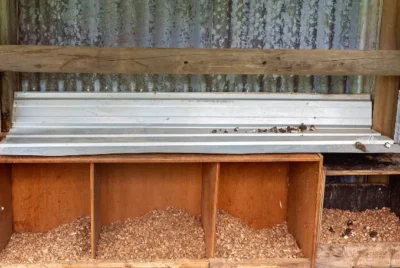How to Predator-Proof Your Chicken Coop on a Budget
Raising chickens can be a rewarding and cost-effective way to provide your family with fresh eggs and meat. However, keeping your chickens safe from predators is a top priority for any backyard chicken keeper.
Fortunately, you don’t need to break the bank to predator-proof your chicken coop. With a little creativity and some DIY ingenuity, you can create a secure haven for your chickens without compromising safety.
In this article, we’ll provide suggestions and DIY approaches to building a predator-proof chicken coop on a budget.
Why Predator-Proofing Matters
Predator-proofing your chicken coop is of utmost importance for the safety and well-being of your flock. Predators such as raccoons, foxes, snakes, and neighborhood dogs are constant threats to your chickens, and their attacks can result in injury, stress, and even death to your birds.
Additionally, beyond the immediate harm they can cause, predator attacks can also disrupt your chicken-keeping routine, lead to financial losses in terms of medical bills or replacing lost chickens, and cause emotional distress for the keeper.
A secure coop not only safeguards your chickens but also provides peace of mind, allowing you to enjoy the benefits of raising chickens without worrying about potential threats. It ensures the health and productivity of your flock and contributes to a more sustainable and cost-effective chicken-keeping experience.
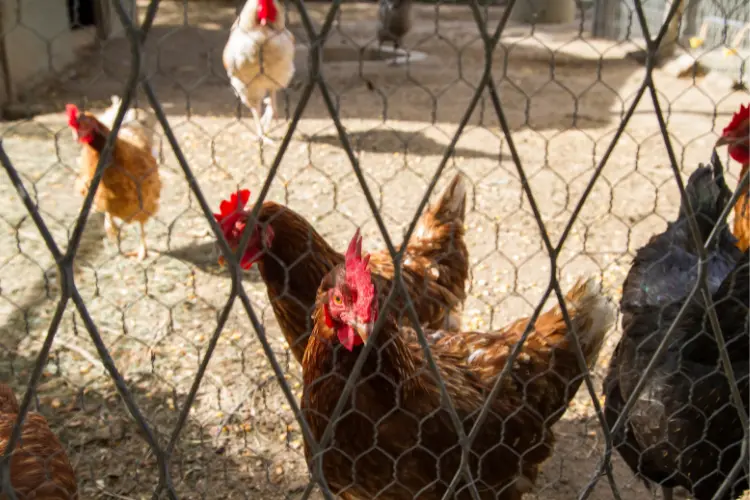
1. Check Your Space and What You Need for a Chicken Coop
Before you start building your chicken coop, it’s essential to assess your available space and determine what you need for your flock. Consider how many chickens you plan to keep, as this will determine the coop’s size. You’ll need to allocate at least 2-3 square feet of space per chicken inside the chicken coop and atleast 8-10 square feet per chicken in the outdoor run area.
2. Pick the Right Spot for Your Chicken Coop
Selecting the right location for your chicken coop is crucial. Choose an area that provides some natural protection, such as near a sturdy fence or under the shade of trees. This can help deter predators and provide shade for your chickens during hot weather. Ensure that the chosen area has good drainage to prevent waterlogging during rainy seasons.
3. Create a Simple and Cheap Layout for Your Chicken Coop
A simple and functional coop design is budget-friendly and effective at keeping predators out. A few key design considerations include:
- Elevated Coop: Raise your coop off the ground to prevent digging predators like foxes and weasels from burrowing underneath.
- Secure Windows and Vents: Cover windows and vents with hardware cloth, a sturdy wire mesh that keeps predators out while allowing for ventilation.
- Solid Locks: Use latches and locks to secure coop doors, ensuring predators can’t pry them open.
- Nesting Boxes: Design accessible nesting boxes inside the coop to keep eggs safe and easy to collect.

4. Use Recycled Materials for Building Your Chicken Coop
One of the best ways to stay within budget is by using recycled materials for your chicken coop. Look for old wood, pallets, or even discarded windows and doors that can be repurposed into your coop structure. Not only is this eco-friendly, but it can also save you a significant amount of money.
5. Build a DIY Chicken Coop with Basic Tools and Supplies
You don’t need a fully-equipped workshop to build a chicken coop. Basic tools like a saw, hammer, nails, and screws, along with some DIY enthusiasm, are enough to get you started. There are plenty of free or low-cost coop plans available online that provide step-by-step instructions, making it easy for beginners to construct a sturdy and safe chicken coop.
6. Add Natural Elements to Your Chicken Coop Design
Incorporating natural elements into your chicken coop design can enhance its functionality and aesthetics while staying within budget. Consider planting shrubs, bushes, or tall grasses around the coop to provide both natural camouflage and a source of food for your chickens. Rocks and logs can serve as natural perches, reducing the need for additional materials.
Additionally, adding a few hanging potted plants can create a calming environment for your chickens, making their coop feel like a cozy home.
7. Save Space in Your Chicken Coop
Making the most of your available space is essential when you’re working on a budget. Utilize vertical space by installing nesting boxes and perches on the walls to maximize floor space for your chickens.
Moreover, foldable or hinged nesting boxes and feeders can be a good solution, allowing you to save space when they’re not in use. Efficient space usage benefits your budget and helps maintain a clean and organized coop.
8. Make an Affordable and Secure Fence for Your Chicken Coop
A sturdy fence is a critical component of any predator-proof chicken coop. To save money while ensuring security, consider using welded wire mesh or hardware cloth to enclose your coop and run.
These materials are durable, cost-effective, and can be easily attached to wooden posts. Make sure the fence extends at least a foot underground to deter digging predators. Regularly inspect and maintain the fence to address any potential weak points.

9. Choose Inexpensive Flooring for Your Chicken Coop
When it comes to flooring for your coop, simplicity is key for budget-conscious coop builders. Sand, straw, or wood shavings are affordable and easy-to-clean options that also provide good insulation.
Additionally, avoid pricey options like vinyl or tile, as they can be expensive and may require professional installation. Regularly refresh the coop bedding to maintain cleanliness and hygiene without breaking the bank.
10. Save Money on Feeding and Watering Your Chickens
To reduce the ongoing costs of chicken keeping, look for ways to save on feed and water expenses. Purchase feed in bulk to take advantage of bulk discounts, and consider making your own chicken feed mixes using readily available grains. Use DIY waterers made from repurposed containers to save on the cost of commercial waterers.
Additionally, place your feeders and waterers in a covered area to prevent waste and keep them clean.
11. Control Pests in Your Chicken Coop
Pest control is essential for the health and well-being of your chickens. To avoid costly pest infestations, implement natural pest control methods. Encourage beneficial insects like ladybugs and use diatomaceous earth, a natural and affordable substance, to deter pests such as mites and lice. Regularly clean and sanitize your coop to minimize pest-friendly environments.
Read also: How to Keep Flies Away from Chicken Coop: Tips and Tricks
12. Keep Your Chicken Coop Maintenance Budget-Friendly
Good maintenance is key to extending the life of your chicken coop and saving money in the long run. Routinely inspect the coop for signs of wear and tear, and address any problems promptly to prevent costly repairs later.
Moreover, regularly clean and disinfect the coop, as cleanliness can help prevent diseases that may require expensive treatments. By staying proactive with maintenance, you’ll save money on major repairs and healthcare costs for your chickens.
Read also: Quick and Easy: How to Clean a Chicken Coop in Minutes
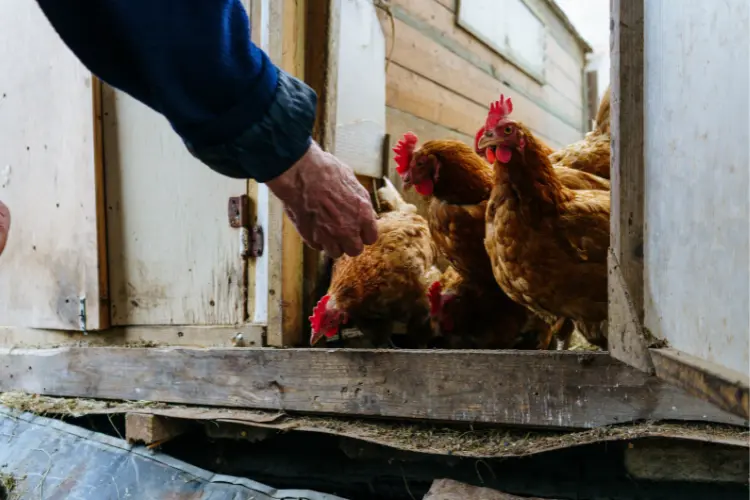
Conclusion
Predator-proofing your chicken coop on a budget is a practical and essential endeavor for any backyard chicken keeper. While it may require some initial investment and DIY effort, the benefits far outweigh the costs.
Moreover, protecting your flock from potential threats ensures their safety and contributes to healthier and more productive chickens. By doing these strategies and tips, you can create a secure and budget-friendly coop that provides peace of mind and a sustainable chicken-keeping experience for years.
Remember that diligence, regular maintenance, and a proactive approach are key to keeping your chickens safe and thriving in their predator-resistant sanctuary.

